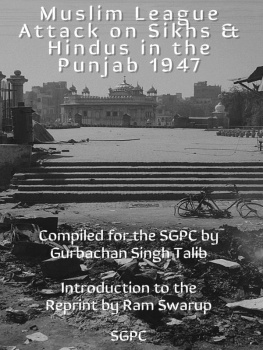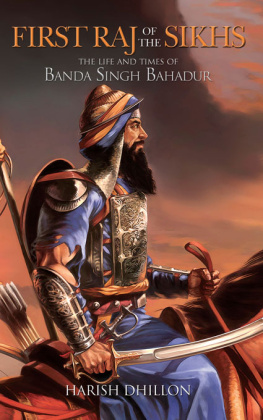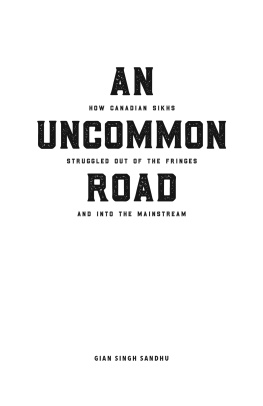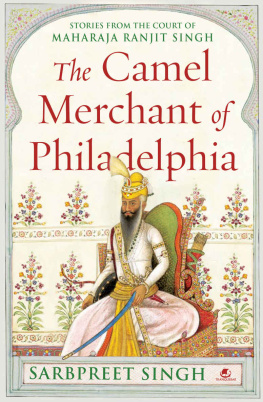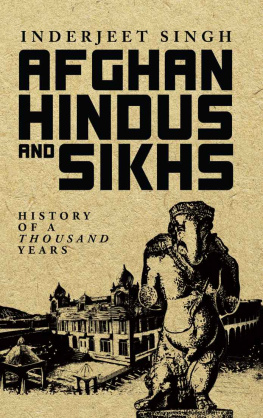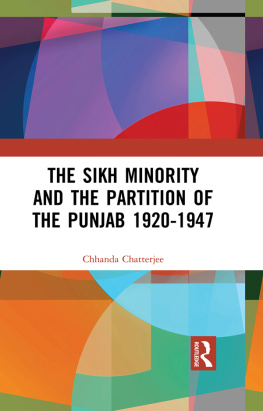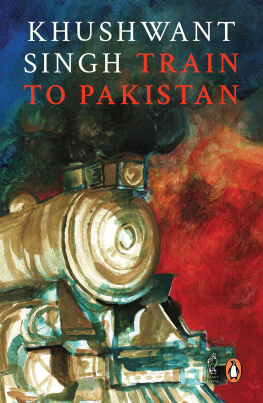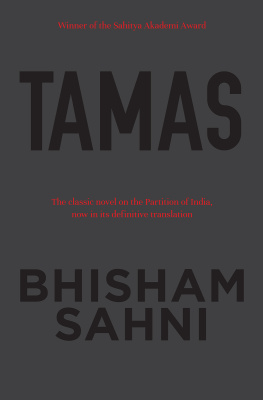INTRODUCTION
The volume in hand is a reprint of an old book compiled in 1947 by Sardar Gurbachan Singh Talib, Principal of the Lyallpur Khalsa College, Jullundur, and published in 1950 by the Shiromani Gurdwara Parbandhak Committee (SGPC). It records the story of 7-million Hindus and Sikhs who were uprooted from their homes in the West Punjab, the North-Western Frontier, Sind and parts of Kashmir. It tells the story of political parleys that preceded this event, their inevitable failure, and the barbarity that immediately followed - barbarity that had elements of pre-planning. The book records the atrocities of this period - the carnage, killings, abductions and forced conversions that took place particularly in 194 6-47, forcing Hindus and Sikhs to leave their hearths and homes and start on the biggest mass migration of humanity, as the author describes it.
At the end of the book, the author gives an Appendix, 100 pages of about 50 eye-witness accounts of those atrocities. It contains statements of those who saw themselves attacked, their houses burnt, their kith and kin killed, their womenfolk abducted but who themselves survived to relate their account. The section also includes press reports and other first-hand accounts. For example, one report which appeared in The Statesman of April 15, 1947 narrates an event that took place in village Thoha Khalsa of Rawalpindi District. It is a story of tears and shame and also of great sacrifice and heroism. The story tells us how the Hindu-Sikh population of this tiny village was attacked by 3000-strong armed Muslims, how badly outweaponed and outnumbered, the beseiged had to surrender, but how their women numbering 90 in order to evade inglorious surrender and save their honour jumped into a well following the example of Indian women of by-gone days. Only three of them were saved. There was not enough water in the well to drown them all, the report adds. The author also gives an 85-page long list of atrocities, date by date and region by region, that took place during the months from mid-December 1946 to the end of August 1947. And these represent only a small fraction of what really happened, and they have to be multiplied a hundred-fold or more to get the right proportions, the author says.
From this it would appear that the book deals only in atrocity stories albeit true ones. But if there was nothing more to it, the events it chronicles could not hold long-range interest and it was perhaps better that the wrongs were forgotten and forgiven. We must also bear in mind that these atrocities alone could not make the full story. Even during the midst of all this carnage, there must have been many cases of humanity and chivalry and there must also have been people who rendered neighbourly help not without some risk to themselves. Let us not forget this chapter and let us be thankful to this innate goodness in man which binds humanity together and rises above the crusading ideologies that teach inhumanity.
But it would not do to neglect the other chapter dealing in unpalatable facts, particularly if those facts have a deeper story to tell and a continuing pattern to reveal, and if they disclose a larger ideational framework or ideology at work. Luckily for us the author does more than chronicle gruesome events. He goes behind them and explains why they happened. He tells us that the mass exodus did not happen as if by chance but that it was the last culminating episode in a conspiracy that had been under planning for more than a decade before it actually occurred, that it took place because it was the conspiracy of the Muslim League in India to establish a Muslim State which should not be encumbered with any such non-Muslim population as would be a likely factor in diluting to any extent its purely Muslim character. Therefore, the Hindus and Sikhs, the minorities in the new Muslim homeland, were not to be suffered to stay there. This minorityism, the name for Hindus and Sikhs, was the major enemy of the Milltat, as Rehmat Ali, one of the early League leaders and intellectuals and coiner of the word Pakistan, said.
According to its original conception, Pakistan itself was to be larger than it turned out to be; it was to include Kashmir, Assam and Bengal in the East and Hyderabad and Malabar in the South and many independent Muslim states within the rest of the Indian territory. India, or whatever remained of India, was itself to be considered Dinia, an important Islamic concept. The author explains that it means it would be the continent which, if not at the moment the home of an Islamic State, was such in immediate conception, waiting to be converted and subordinated to Islam through the proselytising and conquering zeal of its sons.
This was broadly the approach of the generality of Muslims though there were also differences of emphases and in exceptional cases even disagreement with the main thesis. Some of them, particularly of Ulema class, sounded a warning that Pakistan might impede the establishment of Dinia by arousing unnecessary resistance among the Hindus; therefore, they stayed away from the Pakistan campaign and some of them even opposed it. They came to be known as nationalist Muslims.
Sardar Gurbachan Singh Talib mentions this broader dimension and connects the events of the forties with the League politics and the League politics itself, through Dinia, with the larger Muslim politics. He, however, does not develop the point and it remains no more than a hint. But he does more than most other authors whose vision remains confined in the best of cases to the Leagues activities and who provide a narrow and even distorting framework. The fact is that League politics did not initiate Muslim politics but was itself a part of this larger Muslim politics; it was neither the latters beginning nor its end but its continuation. Muslim politicians and scholars also see it this way. Bhutto tells us that the starting point of Pakistan goes back over a thousand years to when Muhammad bin Qasim set foot on the soil of Sind and introduced Islam in the sub-continent. History of Pakistan: Past and Present, a typical textbook taught in Pakistans schools, begins the story of Pakistan with the Advent of Islam, giving exactly nine pages to Pre-Islamic Civilization, negatively presented as Jahiliya, an important Islamic concept and a name for all pre-Islamic period. Muslim scholars have also their own idea and version of Muslims freedom struggle and they equate it with the Muslim Empire. It began when Muslims lost their empire after Aurangzeb and partially ends with the establishment of Pakistan. Pakistans official History of the Freedom Movement of Muslims in the Indo-Pakistan Sub-continent covering the period from the death of Emperor Aurangzeb in 1707 to the Establishment of Pakistan in 1947 reveals their approach.
II
Muslim politics in turn is grounded in Muslim theology. Islam believes in one God (their God) but two humanities: the believers and the infidels. Islam teaches, at least according to its most pious and learned men, Jihad or holy war against the infidels. It is not that the infidels have done any harm to Islam or Muslims but it is simply because holy war against the infidels is established as a divine ordinance, by the word of God, who has said in the Koran, Slay the Infidel, according to Hidayah, an old and important work widely esteemed in the Muslim world.
Similarly, it is not a question of self-defence against any aggression or any unprovoked war but it is simply because the infidels by being infidels incur the destruction of the sword, although they be not the first aggressors, to put it again in the language of the Hidayah, which derives it from various passages in the sacred writings which are generally received to this effect. It reveals not only what the Islamic sacred writings say but, what is still more important, what the Muslim pious men and scholars believe these writings do. There has been a wide consensus among them about the message of these writings.

